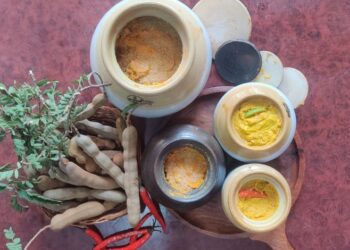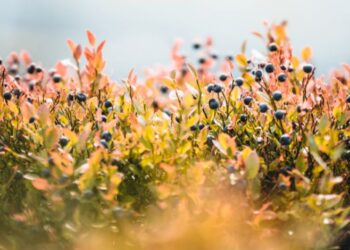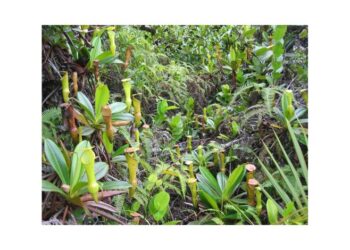Discover nature’s pantry with this seasonal foraging guide, learn what’s edible each season and how to forage safely and sustainably.
It was a cool spring morning, and I was on a track I knew well just outside of town. As I reached down to tie my boot, I saw it: a skinny green onion sticking up through the woodland floor. A friend once told me about wild ramps and how they smelled like garlic and onions mixed together. I pinched off a leaf, took a tentative sniff, and the strong smell hit me like a vivid, tasty recollection.
That moment made me perceive the woods in a new manner. I learned that nature wasn’t simply pretty to look at; it was also a place to find food.
This seasonal foraging guide is a great way to get back in touch with the soil, feed your body, and even save some money, whether you’re a hiker, homesteader, prepper, or just someone who wants to get closer to nature. And the best part? You don’t need to take a wilderness survival course to get started. You just need to be curious, get some help, and be willing to pay attention to what’s going on right in front of you.
Let’s get started with each season.
What You'll Discover:
Spring Foraging: A New Beginning in Nature
If you know where to look, spring is the season of plenty. After a long winter, the ground wakes up, and with it come soft sprouts, leafy greens, and fresh herbs that are ready to be found.
What Can You Eat in the Spring?
- Ramps (wild leeks) , The best thing to find in early spring. They smell and taste like garlic, which makes them great for pesto, omelets, or just sautéed in butter.
- Fiddlehead ferns , Young, curled fronds of some ferns, including the ostrich fern. Tastes great when steamed or pan-fried. Just be careful to boil them, eating them raw can upset your stomach.
- Stinging nettles , Don’t be afraid of the name. When prepared, they lose their sting and become a spinach-like superfood full of nutrients.
- Chickweed and cleavers , Delicate, juicy greens that work great fresh in salads or steeped into spring cleansing teas.
- Violets and dandelions , Those purple and yellow “weeds” in your yard are actually tasty! Violets are fragrant and flowery, while dandelion leaves are bitter but delicious when young.
Forager’s Tip: The best time to eat early spring plants is right after the snow melts but before the flowers blossom. Look in your lawn, along stream banks, and in clearings in the woods.
Personal Note: After a long day of hiking, I made a soup with nettles and wild garlic. I was cold, filthy, and tired, but that soup tasted like gold. It felt like the earth was giving me its first gift of the year.
Summer Foraging: Berries, Flowers, and Flavor from the Sun
In the summer, nature’s buffet is open: berries are ripe, herbs smell good, and flowers that can be eaten are everywhere. It’s the greatest time to munch right from the bush (with care, of course).
What Can You Eat in the Summer?
- Wild strawberries, blueberries, and blackberries , Great for trail snacks, jams, or cobblers.
- Elderflowers , Delicate, fragrant blooms that create wonderful syrups and teas.
- Purslane and lamb’s quarters , Two wild greens that are underrated but perfect for summer salads.
- Yarrow, mint, and lemon balm , Dry or steep these herbs into teas that cool you down and settle your stomach.
- Mulberries , Sweet and slightly tart berries that fall from trees when ripe. Bring a tarp to harvest a lot!
Forager’s Tip: In the summer, it’s easy to lose focus when there’s so much abundance. Always verify your IDs, especially with berries and flowers. Some lookalikes can be dangerous.
Personal Note:
The first time I found a wild patch of mulberries, I stained my hands, shirt, and probably half my face from eating too many right off the branch. My backpack strap was sticky for a week, and I didn’t even care. It felt like childhood.
Fall Foraging: The Earth’s Harvest Season
There’s something deeply grounding about fall foraging. The air is cool, the leaves crunch underfoot, and the forest appears to be telling you to get ready, gather, and store.
What Can You Eat in the Fall?
- Mushrooms (chanterelles, puffballs, oysters) , Fall is the best season for these. Always forage mushrooms with a guide or expert, misidentification can be dangerous.
- Acorns and hickory nuts , After proper leaching to remove tannins, acorns can be ground into flour. Hickory nuts are buttery and sweet.
- Crabapples and wild apples , Tart, firm, and perfect for sauces or cider.
- Hawthorn berries , Good for heart health and delicious in syrups and tinctures.
- Rose hips , Packed with vitamin C; perfect for teas and jellies.
Forager’s Tip: Bring a strong basket or cloth bag when foraging in fall, you’re likely to collect heavier items like nuts and fruits. Always harvest from the ground when possible, and don’t take everything, leave some for others and the wildlife.
Personal Note: One October, I spent a day with my uncle picking black walnuts. We wore gloves (they stain like crazy), cracked them with a hammer, and ate them by the fire. That strong, earthy taste? You can’t get that from a store.
Winter Foraging: The Quiet Time of Plenty
You would imagine that foraging stops when it snows. But winter has its own mysteries that are subtle, strong, and often missed.
What Can You Eat in the Winter?
- Pine and spruce needles , Create a fragrant tea full of vitamin C that smells like a forest.
- Rose hips , If you missed them in the fall, they often stay on bushes into winter.
- Wild garlic , Grows even under light snow in milder areas.
- Cattail roots , Tricky to dig up but available in marshy spots.
- Chickweed and bittercress , Cold-hardy greens that pop up after thaws.
Forager’s Tip: Bundle up and go slow. Winter foraging is about mindfulness, not volume. Check under evergreens, near creeks, or wind-sheltered spots.
Personal Note:
Last December, I brewed pine needle tea during a camping trip. The steam from the mug fogged up my glasses, and the scent reminded me of childhood Christmas trees. It felt like drinking the forest’s soul.
Foraging Ethics: Respect the Land, and It Will Feed You
Whether you’re harvesting a handful of wild mint or gathering enough mushrooms to fill your fridge, always forage with care and respect. Here are some basic principles from this seasonal foraging guide:
- Only take what you need , Leave enough for animals, other foragers, and plant regrowth.
- Check your local laws , Not all areas allow foraging; national parks often have restrictions.
- Avoid contaminated areas , Stay away from roadsides, golf courses, and sprayed zones.
- Protect endangered species , Learn what’s threatened in your region and avoid disturbing it.
Foraging is a relationship, not a transaction. Treat nature well, and it gives back in delicious, unforgettable ways.
Tools & Tips for Beginner Foragers
If you’re just getting started, this seasonal foraging guide recommends a few essential tools:
- Field guide or ID app (PictureThis, Seek by iNaturalist)
- Sharp foraging knife
- Mesh bag or basket (avoid plastic, it wilts greens)
- Gloves (nettles, thorns, and messy nuts)
- Notebook , To log plant sightings, harvest dates, and recipe ideas
Bonus Tip: Create a local “foraging map” for yourself. Mark locations of useful plants and note seasonal patterns to revisit next year.
What to Do with Your Foraged Goods?
Once you’ve filled your basket, the fun doesn’t stop:
- Dry herbs for use in teas or as seasoning.
- Freeze berries for smoothies or baking.
- Make tinctures or infused oils using wild herbs.
- Ferment wild greens or flowers , try adding grape leaves to kimchi!
- Cook meals that honor the season and your effort, like mushroom risotto, rose hip jam, or wild green pesto.
My Journey with Foraging
When I first started, I thought this seasonal foraging guide was just about cutting grocery costs. And yes, free mushrooms or greens help stretch the budget, but the deeper reward came from the connection.
Now I notice things I never used to: when violets bloom, when the wild mint creeps back near the creek, the way the woods smell after a rain. I’ve made salads from forest floors, soups from trailsides, and once, an entire birthday meal from what I foraged in a week.
It’s more than food. It’s a way of seeing.
Key Takings
- You don’t need a forest to forage. Start in your yard. Walk your neighborhood trail. Check after a rain and see what pops up.
- A good seasonal foraging guide is less about expertise and more about attention. Listen. Look. Smell.
- Taste carefully. And before long, you’ll realize, you were surrounded by abundance all along.







